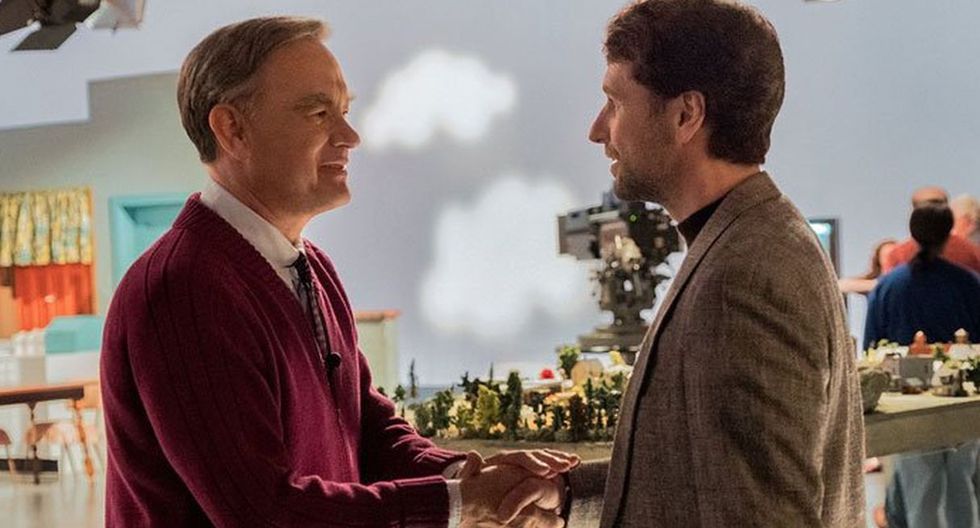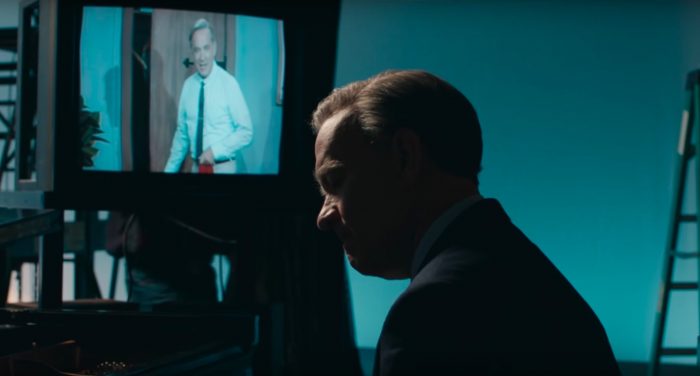There’s an ethereal quality to Mister Rogers that Tom Hanks wholly and skillfully channels while playing the legendary children’s TV host in Marielle Heller’s A Beautiful Day In The Neighborhood; a role that earned him a Best Supporting Actor Oscar nomination. Rogers’ goodness and authenticity remain unassailable 17 years after his death and Hanks inspires a similar kind of trust. Both are rare paragons in an era of cracked legacies and bared failings that often demand that we reevaluate and reframe our view of heroes. It’s a perfect combination and a portrayal that doesn’t call into question childhood memories of Rogers as a perfect person. But it does, in its final moments, tack on something that manages to assume a humanness in Rogers that we might have missed when he was trying to speak to each and every one of us through our televisions. And it’s a scene that’s worthy of revisitation ahead of the Oscars if, for nothing else, its enduring relevance.
Logic dictates that Fred Rogers got pissed off from time to time. Having an ethereal quality doesn’t mean one is actually otherworldly or able to extinguish all frustration. Consider the doomed battles Rogers quietly fought in the twilight of his career — something Esquire writer Tom Junod wrote about in the profile piece that served as the jumping-off point for the film. (Junod was, of course, changed to Lloyd Vogel and played, wonderfully, by Matthew Rhys.)
“He is losing, of course. The revolution he started — a half hour a day, five days a week — it wasn’t enough, it didn’t spread, and so, forced to fight his battles alone, Mister Rogers is losing, as we all are losing. He is losing to it, to our twenty-four-hour-a-day pie fight, to the dizzying cut and the disorienting edit, to the message of fragmentation, to the flicker and pulse and shudder and strobe, to the constant, hivey drone of the electroculture…and yet still he fights, deathly afraid that the medium he chose is consuming the very things he tried to protect: childhood and silence.”
Screenwriters Micah Fitzerman-Blue and Noah Harpster spent nearly a decade exploring Rogers’ life while working on the script that would become A Beautiful Day In The Neighborhood and earn them Critics Choice and WGA nominations for Best Adapted Screenplay. They seem to still marvel at how nothing ever seemed to divert him from his mission.
“Fred Rogers was remarkably consistent and sort of unwaveringly amazing for 74 years,” Fitzerman-Blue tells Uproxx, adding that Rogers was, “confrontationally kind” and an “emotional archeologist.” Those are wonderful descriptors, aren’t they?
Fitzerman-Blue goes on to say that he wanted to tell the story of the Rogers who was “quietly ministering to people after hours, early in the morning, writing letters, praying for people and getting involved in the lives of individuals.” But they also wanted to understand the weight that he took on and where he parked any dissatisfaction he might have had.

“Over the years, we were able to go to Pittsburgh and meet the people who knew Fred best and interview them at length multiple times,” says Harpster while recounting a “pivotal moment” with Bill Isler, who he calls the “gatekeeper” of the Fred Rogers Company.
“We asked him, ‘Fred was taking the burden of people on all day long for decades. He was hearing people’s darkest stories and they’re at their most vulnerable moments and truly he’s taking in tragedy. How did he deal with that? Did he ever talk to you about that?’ And Bill, who was one of Fred’s best friends said, ‘That’s a good question. He didn’t really talk to me about those things, but he talked to Joanne about them. You should talk to Joanne.’”
Joanne Rogers married Fred Rogers in 1952 and stood beside him as he became a household name that was renowned for his capacity to listen, hear, and council — either in public by way of Mister Rogers’ Neighborhood or in private. But despite Isler’s assumption that Fred had turned to his wife to vent, she offered a similar, yet surprising message, according to Harpster, when she was asked if her husband had discussed the “darkness and tragedy” that people had put onto him: “That’s a good question. He didn’t really talk to me about those things. He talked to Bill about those things.”
Mister Rogers is not the central focus of A Beautiful Day In The Neighborhood. Lloyd Vogel, the Tom Junod stand-in is as he deals with cynicism and anger over his estrangement from his father, who had betrayed and abandoned Lloyd’s mother on her deathbed years prior. But while those traumas don’t match the real ones that impacted Junod’s life and sparked his eventual friendship with Rogers, they speak to a journey that the writer took as a result of that friendship. “If he taught me anything, it was to be open to things. To be open to opportunities, people, reconciliation, forgiveness,” Junod told USA Today right around the film’s release.
“This was a movie about forgiveness, but it’s also a movie about anger management,” Harpster tells us before recalling the Mister Rogers song “What Do You Do With The Mad That You Feel?”
“Fred said it in real life and he says it [in the film]. There are healthy ways to deal with your anger. There are healthy ways to feel with your negative feelings. You can bang on all the low notes of the piano. And Fred was always, in his life, looking for healthy practices, both for himself and also for his audience for how to deal with it.”
There is no evidence that Mister Rogers actually banged on a piano in frustration over an achy back, the amount of time left in his fight to protect, as Junod wrote in Esquire, “childhood and silence,” or a world that was, perhaps more rapidly, losing its patience for innocence and its willingness to give people time, space, and quiet to process. And it doesn’t really matter.
“The two most important people in Fred’s life both say that he didn’t talk to them, he didn’t share the burden that he was taking on all day. Where did that go?” Harpster asked when we spoke before addressing that final scene. “I think that’s part of what those final moments are, which is, this wasn’t easy necessarily. It was work for Fred. He took it upon himself to live this life and to be there for people in this way, and that came with a price.”
From Junod talking about how Rogers showed him how to let go of anger to become a better man to the words of his songs and his penchant for playing a piano at the end of a day on set, that scene feels right and it feels powerful. It also feels necessary to the continuation of Fred Rogers’ legacy.

Despite the pops of nostalgia for Rogers following the release of the film and the Oscar-nominated documentary, Won’t You Be My Neighbor, the reality is that all TV shows and movies get subsumed by what Junod called “the constant, hivey drone of the electroculture.” There is no fresh Mister Rogers content coming and no remarkable envoy to preach on his message with the ability to command the same audience and respect that he had. There is only the message, beat up like an old puppet, but capable of evoking a feeling and a response for its simplicity and truth. And that scene stands as a reminder of that message as he pounds those keys and, perhaps more importantly, as he returns to a sweeter melody a moment later.
I think it’s okay to be scared and frustrated, and it’s okay to fight losing battles if they matter to you and the person you want to be. I think that’s what Mister Rogers is saying through actions inspired by Tom Junod’s story, scripted and envisioned by Fitzerman-Blue, Harpster, and Heller, and manifested by Tom Hanks. And I think it’s something that I want to carry with me as I move through a world where anger mounts and forgiving instincts fade so easily as to feel natural. Even when there is, truly, another way to be. Not the way of a saint, but of a guy who tried really hard.







